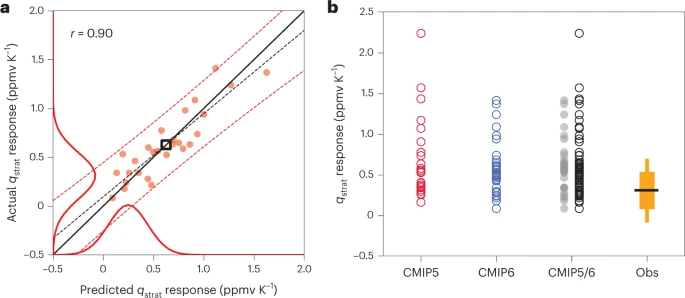Phys.org June 26, 2023
Future increases in stratospheric water vapour risk amplifying climate change and slowing down the recovery of the ozone layer. Uncertainty in modeling primarily arises from the complex processes leading to dehydration of air during its tropical ascent into the stratosphere. An international team of researchers (UK, USA – NOAA, University of Colorado, Switzerland, Germany) used a statistical-learning approach to infer historical co-variations between the atmospheric temperature structure and tropical lower stratospheric water vapour concentrations. They demonstrated that these historically constrained relationships are predictive of the water vapour response to increased atmospheric carbon dioxide and obtained an observationally constrained range for stratospheric water vapour changes per degree of global warming. Across 61 climate models, they found that a large fraction of future model projections was inconsistent with observational evidence, and frequently projected strong increases were highly unlikely. According to the researchers their constraint represents a 50% decrease in the 95th percentile of the climate model uncertainty distribution, which has implications for surface warming, ozone recovery and the tropospheric circulation response under climate change… read more. Open Access TECHNICAL ARTICLE

Framework performance and the observational constraint. Credit: Nature Geoscience (2023)